-
 bitcoin
bitcoin $112195.049338 USD
2.42% -
 ethereum
ethereum $4124.915858 USD
2.81% -
 tether
tether $1.000570 USD
0.02% -
 xrp
xrp $2.861568 USD
2.25% -
 bnb
bnb $1000.346670 USD
3.04% -
 solana
solana $209.070819 USD
3.38% -
 usd-coin
usd-coin $0.999870 USD
0.02% -
 dogecoin
dogecoin $0.235379 USD
2.65% -
 tron
tron $0.335681 USD
-0.20% -
 cardano
cardano $0.803501 USD
3.38% -
 hyperliquid
hyperliquid $47.120881 USD
3.56% -
 chainlink
chainlink $21.501300 USD
3.44% -
 ethena-usde
ethena-usde $1.000571 USD
0.02% -
 avalanche
avalanche $29.793378 USD
3.62% -
 stellar
stellar $0.366964 USD
2.42%
What is liquidity mining in DeFi?
Liquidity mining, a crucial mechanism in DeFi, enables users to earn rewards by providing liquidity to decentralized exchanges, enhancing market access and depth.
Feb 16, 2025 at 02:06 am
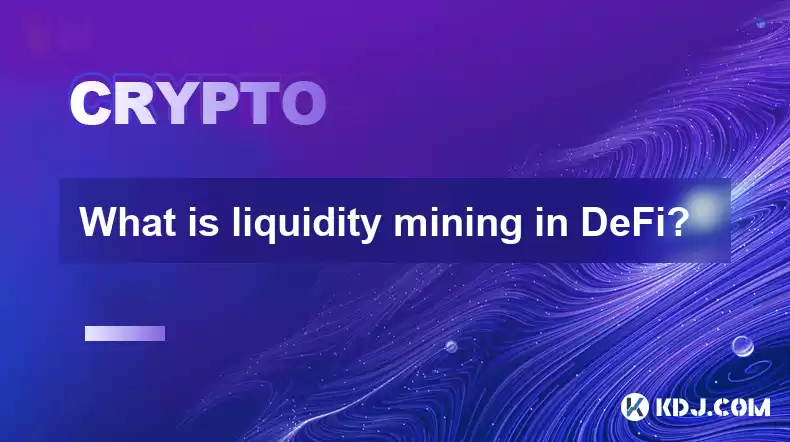
- Definition and Overview of Liquidity Mining
- Types of Liquidity Mining
- Benefits of Liquidity Mining
- Risks and Considerations
- How to Participate in Liquidity Mining
- Top Platforms for Liquidity Mining
- FAQs
What is Liquidity Mining in DeFi?
Liquidity mining is a decentralized finance (DeFi) mechanism that rewards users for providing liquidity to liquidity pools, which are essential for facilitating trades on decentralized exchanges (DEXs). By providing liquidity, users earn rewards in the form of tokens native to the protocol or liquidity pool.
Liquidity mining incentivizes users to lock their crypto assets in liquidity pools, thereby enhancing the depth and liquidity of the market. This, in turn, benefits traders who rely on DEXs to execute their trades with reduced slippage and greater access to liquidity.
Types of Liquidity Mining
Liquidity mining can be conducted through various approaches, including:
Automated Market Makers (AMMs): AMMs use smart contracts to create liquidity pools. Liquidity providers deposit their assets into the pool and receive LP tokens representing their share of the pool's liquidity.
Order Book-Based DEXs: Some decentralized exchanges rely on order books instead of AMMs. Liquidity providers place orders to buy or sell assets within the order book, earning rewards when their orders are matched and executed.
Hybrid Models: Hybrid models combine aspects of AMMs and order book-based DEXs, offering users a mix of features and earning opportunities.
Benefits of Liquidity Mining
Participating in liquidity mining offers several benefits:
- Earning Rewards: Liquidity providers earn rewards in the form of tokens for contributing to the liquidity pool.
- Protocol Governance: Liquidity providers often receive governance tokens that grant them voting rights in decision-making related to the protocol or liquidity pool.
- Reduced Trading Costs: Liquidity pools enhance market liquidity, leading to reduced slippage and lower transaction costs for traders.
- Financial Inclusion: Liquidity mining enables users to participate in DeFi and generate passive income without extensive technical knowledge or large capital investments.
Risks and Considerations
However, liquidity mining also poses certain risks and considerations:
- Impermanent Loss: When the price of deposited assets fluctuates, liquidity providers may experience impermanent loss if they withdraw their assets before prices recover.
- Smart Contract Risk: Liquidity pools and protocols can be vulnerable to smart contract bugs or exploits, potentially leading to the loss of funds.
- Market Volatility: Liquidity mining rewards can be affected by market volatility, which may result in reduced earnings or losses.
- Opportunity Cost: By locking assets in liquidity pools, liquidity providers may miss out on potential gains from trading or other investment opportunities.
How to Participate in Liquidity Mining
Participating in liquidity mining typically involves the following steps:
- Choose a Platform: Select a decentralized exchange or liquidity mining protocol that offers favorable terms and aligns with your investment goals.
- Research Pools: Explore the available liquidity pools and their associated tokens, rewards, and fees.
- Provide Liquidity: Deposit your desired assets into the selected liquidity pool and receive LP tokens.
- Monitor and Adjust: Regularly monitor the performance of your mining operations and adjust your liquidity provision strategy as needed to maximize earnings.
Top Platforms for Liquidity Mining
Several notable platforms facilitate liquidity mining, including:
- Uniswap: A leading DEX that offers liquidity mining for a wide range of tokens.
- SushiSwap: Another popular DEX known for its generous liquidity mining rewards.
- PancakeSwap: A DEX focused on the Binance Smart Chain ecosystem.
- Curve Finance: A specialist DEX for stablecoins, offering liquidity mining for stablecoin pairs.
- Balancer: A DEX that allows users to create and customize liquidity pools.
FAQs
Q: What is the difference between liquidity mining and yield farming?A: While both involve providing liquidity, liquidity mining specifically refers to earning rewards for providing liquidity on DEXs, while yield farming encompasses a broader range of DeFi strategies, including liquidity mining, lending, and staking.
Q: Is liquidity mining profitable?A: Profitability depends on factors such as the rewards structure, pool dynamics, and market conditions. Liquidity mining can be profitable, but it also involves risks like impermanent loss.
Q: What are the risks of liquidity mining?A: Key risks include impermanent loss, smart contract vulnerabilities, market volatility, and opportunity cost.
Q: How can I minimize the risks of liquidity mining?A: To mitigate risks, choose reputable platforms, research pools before providing liquidity, monitor your positions regularly, and consider the potential for impermanent loss.
Disclaimer:info@kdj.com
The information provided is not trading advice. kdj.com does not assume any responsibility for any investments made based on the information provided in this article. Cryptocurrencies are highly volatile and it is highly recommended that you invest with caution after thorough research!
If you believe that the content used on this website infringes your copyright, please contact us immediately (info@kdj.com) and we will delete it promptly.
- Ethereum's Price Dance: Will Crypto Rallies Keep the Music Playing?
- 2025-09-29 08:25:12
- Crypto Staking Spotlight: BlockDAG's Referral Revolution Outshines Avalanche & Meme Coin Hype
- 2025-09-29 08:45:16
- BlockDAG, SUI, Chainlink: Navigating the Crypto Landscape in 2025
- 2025-09-29 08:25:12
- XRP Price Gears Up: Breakout Signals and What to Watch
- 2025-09-29 08:30:01
- Bitcoin, Gold, and Digital Assets: Navigating the New Financial Frontier
- 2025-09-29 08:45:16
- Naver & Dunamu: A Powerhouse Partnership Forged in Crypto?
- 2025-09-29 09:05:16
Related knowledge

How to track DeFi activity on a block explorer
Sep 04,2025 at 05:36pm
Bitcoin's Role in Decentralized Finance1. Bitcoin remains the cornerstone of the cryptocurrency ecosystem, serving as both a store of value and a benc...
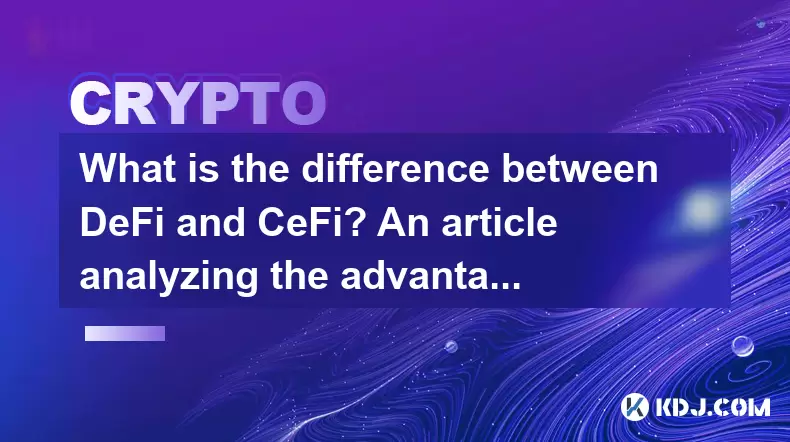
What is the difference between DeFi and CeFi? An article analyzing the advantages and disadvantages of both
Jun 13,2025 at 03:57am
Understanding the Foundations of DeFi and CeFiTo fully grasp the difference between DeFi (Decentralized Finance) and CeFi (Centralized Finance), it’s ...
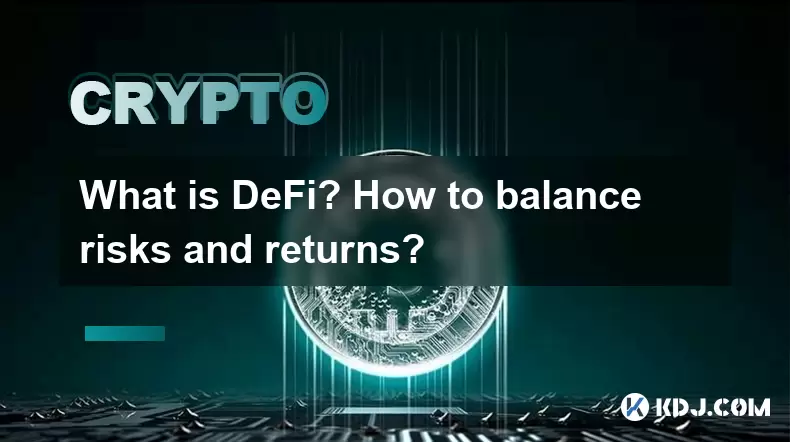
What is DeFi? How to balance risks and returns?
May 31,2025 at 12:22pm
What is DeFi? How to Balance Risks and Returns? Decentralized Finance, commonly known as DeFi, represents a revolutionary shift in the financial ecosy...
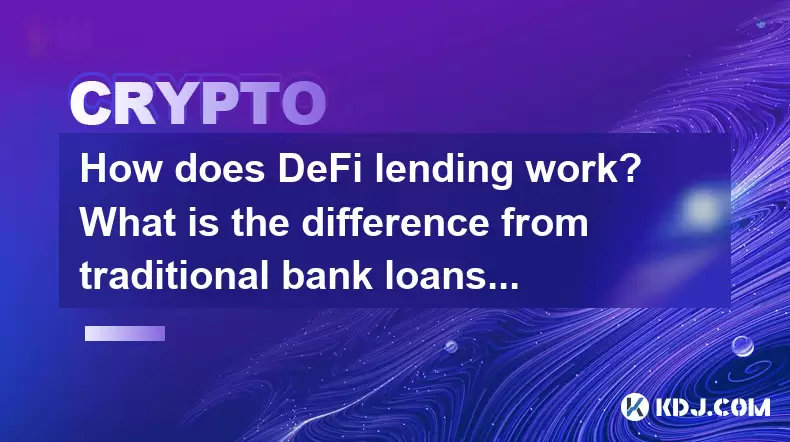
How does DeFi lending work? What is the difference from traditional bank loans?
May 29,2025 at 05:36pm
Introduction to DeFi LendingDeFi lending, or decentralized finance lending, represents a revolutionary shift in the way borrowing and lending are cond...
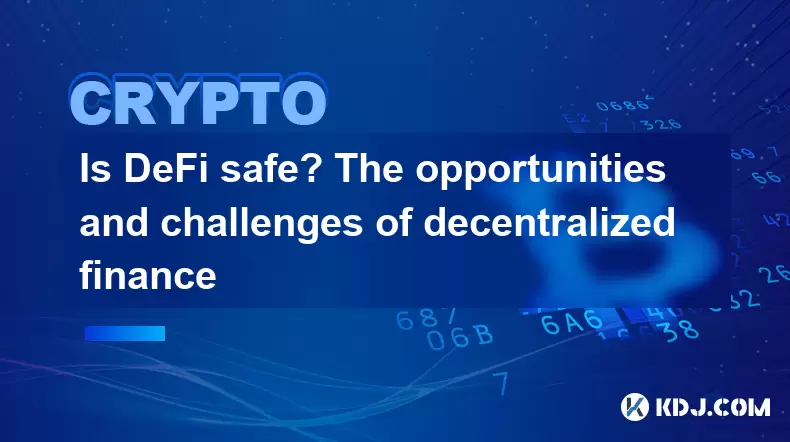
Is DeFi safe? The opportunities and challenges of decentralized finance
May 27,2025 at 02:28pm
Decentralized Finance, commonly known as DeFi, has revolutionized the financial landscape by offering a range of financial services without the need f...
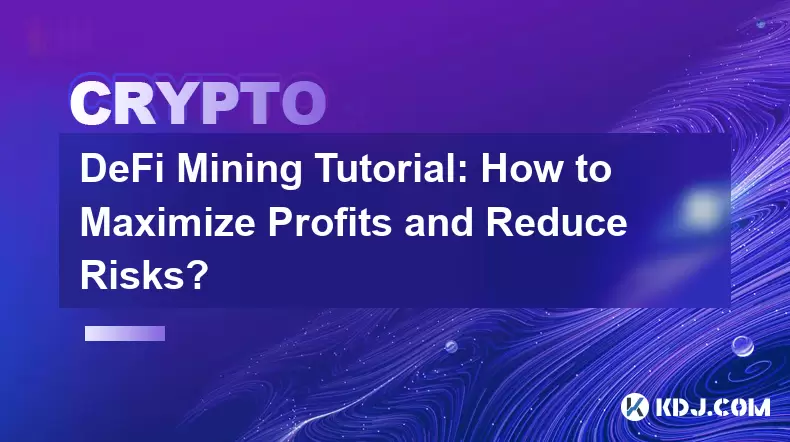
DeFi Mining Tutorial: How to Maximize Profits and Reduce Risks?
May 27,2025 at 07:42am
DeFi, or Decentralized Finance, has opened up a new world of opportunities for crypto enthusiasts looking to maximize their profits through various mi...

How to track DeFi activity on a block explorer
Sep 04,2025 at 05:36pm
Bitcoin's Role in Decentralized Finance1. Bitcoin remains the cornerstone of the cryptocurrency ecosystem, serving as both a store of value and a benc...

What is the difference between DeFi and CeFi? An article analyzing the advantages and disadvantages of both
Jun 13,2025 at 03:57am
Understanding the Foundations of DeFi and CeFiTo fully grasp the difference between DeFi (Decentralized Finance) and CeFi (Centralized Finance), it’s ...

What is DeFi? How to balance risks and returns?
May 31,2025 at 12:22pm
What is DeFi? How to Balance Risks and Returns? Decentralized Finance, commonly known as DeFi, represents a revolutionary shift in the financial ecosy...

How does DeFi lending work? What is the difference from traditional bank loans?
May 29,2025 at 05:36pm
Introduction to DeFi LendingDeFi lending, or decentralized finance lending, represents a revolutionary shift in the way borrowing and lending are cond...

Is DeFi safe? The opportunities and challenges of decentralized finance
May 27,2025 at 02:28pm
Decentralized Finance, commonly known as DeFi, has revolutionized the financial landscape by offering a range of financial services without the need f...

DeFi Mining Tutorial: How to Maximize Profits and Reduce Risks?
May 27,2025 at 07:42am
DeFi, or Decentralized Finance, has opened up a new world of opportunities for crypto enthusiasts looking to maximize their profits through various mi...
See all articles










































































